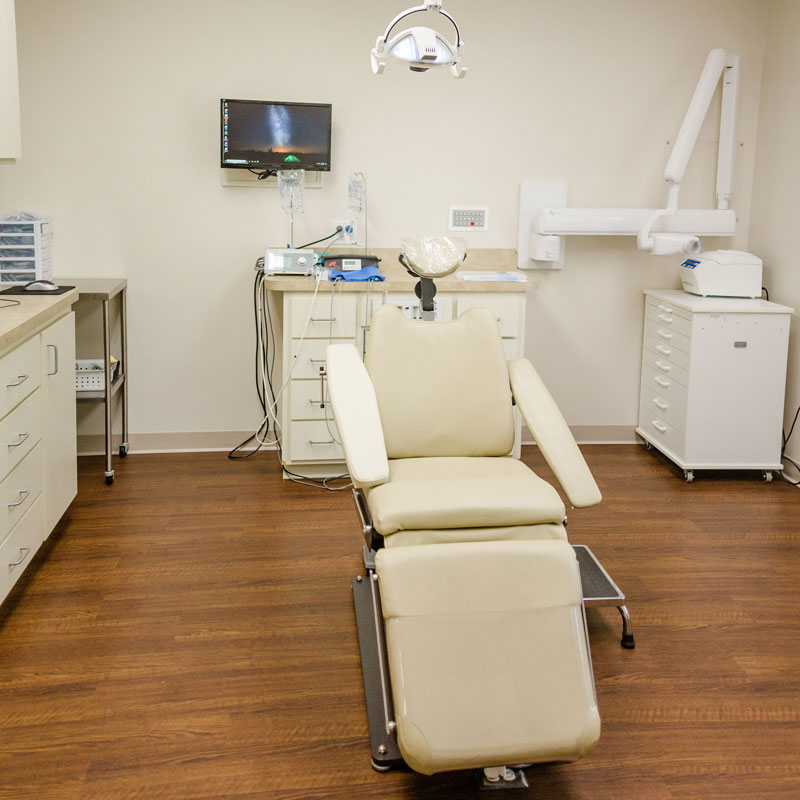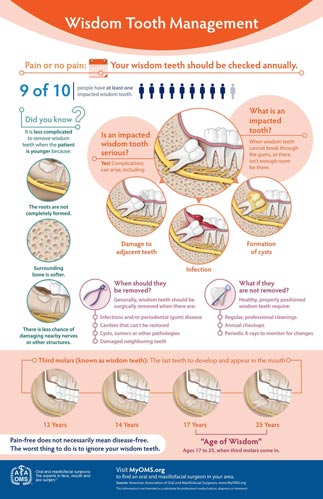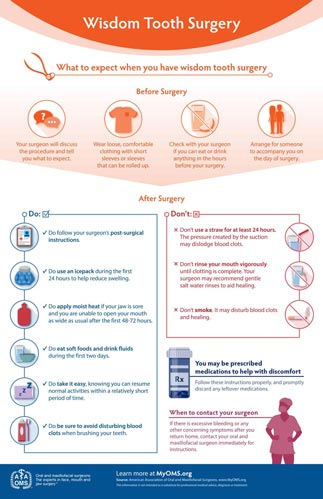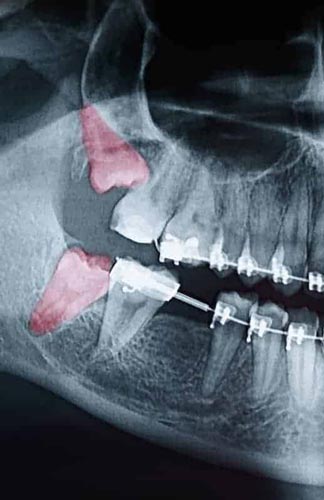Wisdom Teeth Extractions
Evaluation
Most people have enough room in their mouth for 28 teeth. When four additional molars start to come in, usually in the late teens and early 20s, it can cause problems for some.
Wisdom teeth can begin to grow in sideways, only partially erupt, erupt in the wrong position, or get stuck beneath the gum and bone — called impacted teeth. Additional complications include:
- Risk of infection in the tissues surrounding the tooth.
- Disruption to the orthodontic or natural alignment of teeth.
- Formation of tumors or cysts around impacted wisdom teeth, resulting in jawbone or tooth damage.
We evaluate patients’ wisdom teeth before they start to come in, monitoring their formation and progress using X-rays. If the teeth show signs of causing complications, we suggest having them removed. Since early treatment is beneficial to patients, we recommend children be evaluated when they are in their mid-teens.
If wisdom teeth need to be removed, the procedure can be done in the office.

What to Expect
Our goal is to ensure patients’ comfort and help them be as informed as possible so there are no surprises.
In most cases, patients prefer to be under anesthesia during the procedure. We will explain the various forms of sedation we use along with any potential risks so patients can decide which is best for themselves.
After the teeth and roots are removed, we suture the gums to close the wound and prevent infection and place gauze on the incisions to control bleeding.
After surgery, patients rest under supervision until they are able to go home. We provide a post-op kit that includes care instructions, prescriptions for pain medications, antibiotics, and a follow-up appointment.



